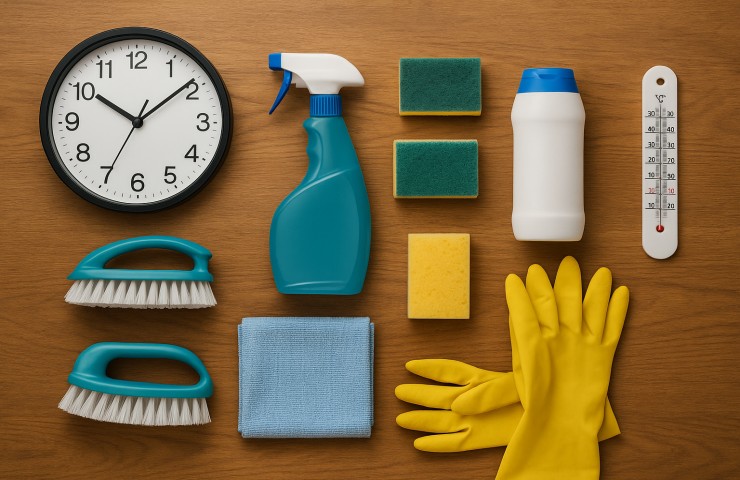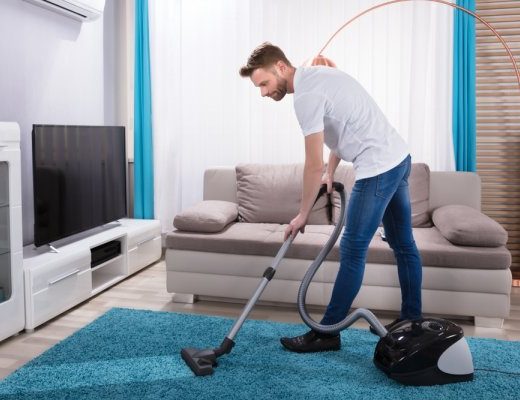Efficient Cleaning: 5 Key Elements for Better Results
Do you ask yourself why some individuals spend hours cleaning only to achieve no results, while others quickly clean and the place is spotless? Based on the scenario above, we can conclude that cleaning is not only about putting in effort; it is about cleaning systematically. Scrubbing the kitchen floor or wiping the dusty shelf hinges depends on how effectively you do it, rather than how much time you invest in it. So, the question arises: what distinguishes a basic cleaning session from an effective cleaning session?
This is exactly what this article intends to address. Similar to baking a cake or repairing an automobile, cleaning also requires its essential components; five components that, if aligned appropriately, will yield the best results. Achieving this will not only mean a cleaner house, but reduced expenditure of time and energy as well. So let’s see what really goes on when cleaning is concerned. Ever heard of working smarter, not harder?
1. Cleaning Efficiency: Schedule Waits and Duration of Cleaning
One of cleaning’s many underestimated factors is time, and the role it plays in the process for an individual is immense, as suggested by Bond Cleaning Sunshine Coast. For example, time works best reserved for certain cleaning products as they require dwell time. Skipping that wait comes with the consequence of scrubbing twice as hard to achieve poor results.
Setting proper cleaning time is equally as important when it comes to cleaning, as it prevents the individual from being interrupted. Rushing during the process often results in cross-contamination as well as lots of frustration. Employing specific “cleaning only” times like early mornings worked better for a lot of people, as it greatly reduces people traffic.
Being consistent applies here as well. Instead of waiting for things to get messy, assign yourself a regular cleaning schedule. Divide tasks into daily, weekly, and monthly, which allows an individual to avoid overwhelming sessions while simultaneously helping keep the environment clean.
2. Action: Appropriate Physiological Exertion and Techniques
Movement is paramount, irrespective of how helpful your tools or cleaners may be. Action, both in movement and in technique, is what truly gets the job done! During the cleaning process, physical activities such as washing, scrubbing, rinsing, and mopping are sequenced, with a greater underlying strategic system than purely sequential.
For cleaning, there is a precise direction of movement in which maximum efficiency is attained. For instance, in wiping surfaces clean, an “S” shape motion is remarkably efficient, as opposed to circular swirling, which leads to streaking and pushing the grime in circles. Always go along with an overlapping path when vacuuming carpet, or you might leave unvacuumed places. When scrubbing surfaces that have stainless steel or wood finishes, always scrub along the grain to avoid marring these fine surfaces.
Also, while the energy one brings to the closure of the task is important, attention given to details is just as critical. When cleaning doorknobs, remote controls, and light switches, they will spend more energy cleaning baseboards and ceiling corners.
Doing so ensures optimum results.
3. Chemistry: The Importance of Selecting the Correct Product
The common fallacy among many individuals emerges around this juncture: wrong product, wrong job. It’s vital to consider, as a rule, the category of grime or dirt and its nature. Cleaning chemistry is based on selecting the appropriate category of product concerning the surface at hand.
For instance, removing greasy solder kitchen messes requires the use of thorough scrubbers. However, for bathrooms, mineral deposit needs to be cleaned with acidic scrubbers such as vinegar or lemon-based products. Disinfectants are hot products for areas full of germs. Disinfectants are needed to maintain hygienic toilets and kitchen counters, but are overused on windows or walls.
Also, the nonsensical use of harsh chemicals like strong scrubbers will do more harm than good. These products will damage the surfaces or flair dangerous indoor air quality. Knowing how to read labels, the ph value, and determining when to employ natural and synthetic cleaning agents can significantly transform cleaning results. And don’t forget product dilution! Correctly diluting many products with water enhances effectiveness and makes them last longer when used as directed on the label.
4. Tools: Correct Equipment
With regards to floor design, would you use a toothbrush to scrape at the floor? Of course, not. Effectively cleaning requires the proper set of tools. Using the wrong equipment will waste time and lead to insufficient results.
A perfect example is microfiber cloths, which are more effective than cotton rags at trapping dust and dirt. Glass is best cleaned with a squeegee, while a vacuum with a HEPA filter reduces allergens. Ergonomically designed scrub brushes relieve the physical demand when dealing with grout or stubborn stains.
Quality tools’ longevity is an investment in itself. Durable tools enhance efficiency for every cleaning session as they do not need replacement as often. Tool hygiene must also be maintained. A mop that has not been cleaned is just as effective as a dirty cloth. Every piece of equipment must be washed and dried after it’s used to ensure perfection for the next round.
5. Temperature: Heat Enhances Cleaning Power
Efficiency greatly benefits from aiding allies in the process, and temperature is one of them. Hot or warm water is ideal for cleaning grease, dirt, and stains as it outperforms cold water. Also, it greatly improves the effectiveness of cleaning products.
Kitchen oils and messes can be relatively easy to clean off stovetops, ovens, and pots and pans with a bit of hot water due to the oil’s breakdown properties. Likewise, scrubbing bathroom tiles with warm water helps in lifting away soap scum and mildew faster. Even laundry is better with bursting hot water, especially for bedsheets, towels, and clothes that have been exposed to allergens.
But knowing when hot water is inappropriate is equally important. Cold water is safer for delicate fabrics and certain surfaces, such as natural stones. In those situations, assuming safeguards like following the manufacturer’s instructions on resource tags would prevent damage is not the best option. When not misused, heat can amplify results and significantly decrease the time spent scrubbing.
Final Thoughts: Master the Elements for Maximum Clean
We have discussed the five components of efficient cleaning: Time, Action, Chemistry, Tools, and Temperature. Each element interacting with the others affords complete control of cleaning outcomes. Rather than going through the motions, simply cleaning becomes enabled with intention, intelligence, and precision when understanding how each element works.
Think about how much time and effort you would save, as well as the relief you would feel just by implementing this knowledge. These five pillars are the foundation for a cleaner, healthier, and more enjoyable living space, be it a tiny apartment or a family home.
So, what do you wish to change first? Is it the timing, the tools, or the technique? Any choice you start with will soon lead to an easier, smarter cleaning routine which will be felt on a larger scale.
Also learn about What are the Advantages of Choosing Expert Cleaning?



